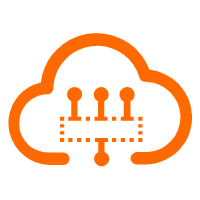There’s a constant tug-of-war in mobile app backend development: keeping things lightning-fast without drowning in infrastructure overhead. Clients expect apps that respond in a blink, scale without complaint, and hold up during those unexpected traffic bursts. But setting up servers, tweaking configurations, and hoping nothing crashes during a marketing push? That can get exhausting.
Serverless architecture offers a refreshing shift in pace. And if you're working with Go (Golang), pairing it with Alibaba Cloud’s Function Compute lets you build without babysitting servers.
This isn’t about tearing down your stack and starting from scratch. Think of it more like clearing your desk — making space to write clean, efficient code, and letting someone else handle the clutter underneath.
Whether you're a mobile app development company managing multiple client builds or a solo dev keeping things lean, the simplicity of this approach has real appeal.
Let’s zoom out for a second.
Mobile apps need backends that can:
● Handle unpredictable traffic spikes
● Respond fast, without chewing through battery life
● Keep pace as features shift or grow
Traditional server-based setups can work… but they often eat up time. Especially if you're rolling out small updates, juggling staging environments, or fielding support requests.
Serverless flips the script. You write the function. You deploy. It scales. Done. No late-night server patching. No capacity planning spreadsheets.
● Manual scaling
● Patching
● Server provisioning
● Paying for resources you’re not even using
You’re billed only when your code actually runs. And that’s kind of the point — it just works when it’s needed, and stays out of your way when it’s not.
Go is simple, fast, and compiled — which means your functions execute quickly and use memory efficiently. You’re not dragging around heavy frameworks or runtime dependencies. You get straight to the point.
And when your function is being called thousands of times per second (maybe after a push notification or a product launch), you’ll be glad Go doesn’t flinch under pressure.
Combine that with Alibaba Cloud’s Function Compute, and you’ve got a backend setup that stays out of your way — until you need it.
Let’s say you’re building a profile feature for a mobile app — users open the app and request their profile. You want it to be quick, stateless, and ready to handle thousands of requests.
Integrating features like an AI-assisted search engine can further enhance user experience by allowing intelligent, fast, and relevant data retrieval across user profiles and related content. Additionally, using a Link Analyzer can help evaluate the quality and performance of backlinks, ensuring that your website maintains strong authority and credibility alongside an optimized user experience.
Here’s how that could look using Go.
go
CopyEdit
package main
import (
"context"
"encoding/json"
"fmt"
)
type UserRequest struct {
UserID string `json:"user_id"`
}
type UserResponse struct {
Name string `json:"name"`
Email string `json:"email"`
}
func Handler(ctx context.Context, event json.RawMessage) (string, error) {
var req UserRequest
if err := json.Unmarshal(event, &req); err != nil {
return "", fmt.Errorf("bad request: %v", err)
}
resp := UserResponse{
Name: "Amina Khan",
Email: "amina.khan@example.com",
}
output, _ := json.Marshal(resp)
return string(output), nil
}This is just a placeholder response — in production, you’d fetch user info from a database or external service.
Now, let’s walk through setting this up on Function Compute.
Prepare your files:
bash
CopyEdit
zip -r function.zip main.goHead to the Alibaba Cloud Console:
Add a new function
Once deployed, use the built-in testing tool to confirm it's working.
Mobile apps can’t call functions directly — you’ll need a REST API. Here’s where API Gateway steps in.
Add a new API:
Now your function has a public-facing endpoint your app can call. You’ll get a URL like:
ruby
CopyEdit
https://123456789.apigateway.cn-hangzhou.aliyuncs.com/prod/user/profileLet’s say you’re working on the iOS app. Making that POST request is straightforward.
Here’s how you might send a request in Swift:
swift
CopyEdit
let url = URL(string: "https://your-api-url")!
var request = URLRequest(url: url)
request.httpMethod = "POST"
request.setValue("application/json", forHTTPHeaderField: "Content-Type")
let requestBody = ["user_id": "user-987"]
request.httpBody = try? JSONSerialization.data(withJSONObject: requestBody)
URLSession.shared.dataTask(with: request) { data, response, error in
if let data = data {
print(String(data: data, encoding: .utf8)!)
}
}.resume()You can follow the same approach with Android or Flutter. As long as the payload is JSON, the backend doesn't care what tech you’re using on the front.
Let’s be real: things break.
Whether it’s a typo, an edge case, or a missed database connection, you want visibility.
Function Compute integrates easily with Log Service (SLS). You’ll be able to:
● View logs for every function call
● Check memory usage and execution time
● Set alerts for slow or failing requests
Just connect your function to a Log Project, and the logs start flowing.
You’ll see things like:
bash
CopyEdit
Function execution started
Received user ID: user-987
Returning mock response
Function execution completed in 43msThat kind of insight saves hours in debugging later.
Here’s where teams usually expand after the basics are in place:
● Authentication: Add JWT or OAuth tokens to secure the API.
● Database access: Integrate with Alibaba Cloud RDS or MongoDB Atlas.
● Rate limiting: Use API Gateway’s built-in controls to avoid abuse.
● Versioning: Create different versions of your functions for testing features safely.
● Environment variables: Store API keys and settings securely.
Building mobile app backends doesn’t have to mean building everything. You can write small, efficient Go functions, deploy them to Alibaba Cloud Function Compute, and skip the heavy lifting.
You’ll spend less time babysitting servers and more time shipping features. And your clients? They'll get apps that feel fast, stay reliable, and grow gracefully — even during surprise spikes in traffic.
Whether you’re a solo developer or part of a team juggling deadlines, a setup like this can simplify your stack without cutting corners.
Disclaimer: The views expressed herein are for reference only and don't necessarily represent the official views of Alibaba Cloud.
Enhancing E-Commerce with Alibaba Cloud's Reverse Image Search Technology
Alibaba Clouder - December 17, 2018
Alibaba Clouder - November 23, 2020
Alibaba Cloud Serverless - February 28, 2023
ApsaraDB - November 17, 2020
Alibaba Clouder - February 3, 2021
Alibaba Clouder - June 9, 2020
 Function Compute
Function Compute
Alibaba Cloud Function Compute is a fully-managed event-driven compute service. It allows you to focus on writing and uploading code without the need to manage infrastructure such as servers.
Learn More Serverless Workflow
Serverless Workflow
Visualization, O&M-free orchestration, and Coordination of Stateful Application Scenarios
Learn More Serverless Application Engine
Serverless Application Engine
Serverless Application Engine (SAE) is the world's first application-oriented serverless PaaS, providing a cost-effective and highly efficient one-stop application hosting solution.
Learn More Elastic High Performance Computing Solution
Elastic High Performance Computing Solution
High Performance Computing (HPC) and AI technology helps scientific research institutions to perform viral gene sequencing, conduct new drug research and development, and shorten the research and development cycle.
Learn MoreMore Posts by Neel_Shah